Sirius
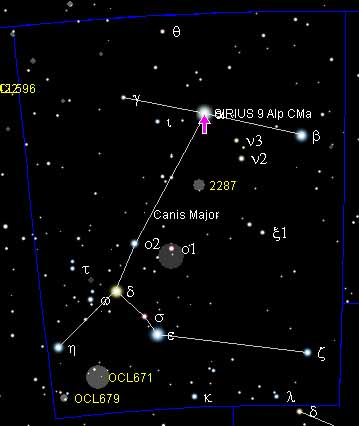
The name Sirius comes from the Latin sirius. It is situated in the eye of the greater dog Canis Major, therefore it is known as the 'Dog Star'. Other meanings:
* Transition Stage - Moving consciousness from one reality (frequency) to another
* Spirit of Wisdom - Zoroastrian Translation
* Brightly Radiating One - The Shining Ones
What to the eye appears as a single star is actually a large binary star system, consisting of a bright white main sequence star of spectral type A1V, named Sirius A, and a faint white dwarf companion of spectral type DA named Sirius B.
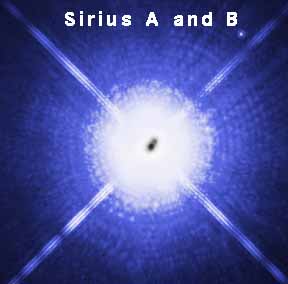
Sirius B is invisible to the naked eye but packs almost the entire mass of our sun into a globe only 4 times as large as the Earth. Sirius B's surface is 300 times harder than diamonds, while its interior has a density 3,000 times that of diamonds. Spinning on its axis about 23 times a minute, it generates huge magnetic fields around it.
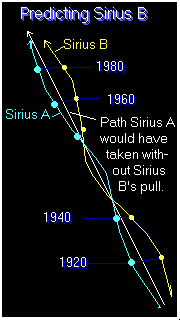
The two stars, Sirius A and Sirius B move around each other, constantly exchanging particles. Because of its greater density and magnetic field, Sirius B takes the lion's share, taking gases and materials off of its larger host body. Sirius B has a super-heavy gravitationally powerful star made of concentrated super-dense matter (essence) with the number 50 associated with it (describing its orbital period).
Every 49.9 years, Sirius A and B, come as close together as their orbits allow, creating huge magnetic storms between them. As they approach each other, the stars both begin to spin faster as tidal forces become stronger, finally flip-flopping over, actually trading places with each other. This energy is eventually released to flow on magnetic field lines to the Sun, which transmits it like a lens to all the planets.
Based on changes in its proper motion, in 1844 Friedrich Wilhelm Bessel deduced that Sirius had a hidden companion.
In 1862 Alvan Graham Clark discovered the companion, which is called Sirius B, or affectionately "the Pup". The visible star is now sometimes known as Sirius A. The two stars orbit each other with a separation of about 20 AU and a period of close to 50 years.
In 1909 Ejnar Hertzsprung suggested that Sirius was a member of the Ursa Major Moving Group, based on the systems movements across the sky. However, more recent research by Jeremy King et al. at Clemson University in 2003 questions whether that is true, since the two components of Sirius appear to be too young. Sirius is roughly half the age of the other members of the stream, so their common motion is most likely a coincidence.
In 1915 astronomers at the Mount Wilson Observatory determined that Sirius B was a white dwarf star , the first to be discovered. This means that Sirius B must have originally been by far the more massive of the two, since it has already evolved off the main sequence.
In 1920 the first spectrum of Sirius B was obtained at Mount Wilson Obvservatory. Sirius B although small and faint and about 10,000 times dimmer than Sirius A is extremely dense and heavy enough to exert influence on Sirius A. The pull of its gravity caused Sirius' wavy movement
The diameter of Sirius A was first measured by Robert Hanbury Brown and Richard Q. Twiss in 1959 at Jodrell Bank using their stellar intensity interferometer.
In 1970 the first photograph was taken of Sirius B by Dr. Irving W. Lendenblad of the US Naval Observatory.
In 2005, using the Hubble Space Telescope, astronomers determined that Sirius B has nearly the diameter of the Earth, 12,000 kilometers (7,500 miles), with a mass that is 98% of the Sun.
The Voyager 2 spacecraft, launched in 1977 to study the four Jovian planets in the Solar System, is expected to pass within 4.3 light years of Sirius in approximately 296,000 years time.
Could there be a Sirius C? In 1995 two French researchers, Daniel Benest and J.L. Duvent, authored an article in the prestigious journal Astronomy and Astrophysics with the title Is Sirius a Triple Star? and suggested (based on observations of motions in the Sirius system) there is a small third star there. They thought the star was probably of a type known as abrown dwarf and only had about .05 the mass of Sirius B.
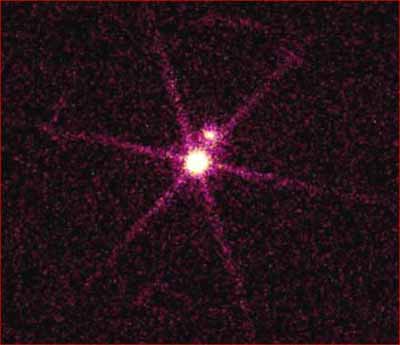
X-Rays From Sirius B - NASA
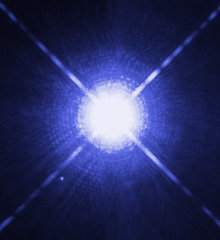
Curiously, some ancient observations of Sirius describe it as a red star. To the Romans this meant an angry god, and they are known to have sacrificed red dogs to this star. Today, Sirius A is bluish white. The possibility that stellar evolution of either Sirius A or Sirius B could be responsible for this discrepancy is rejected by astronomers on the grounds that the timescale of thousands of years is too short and that there is no sign of the nebulosity in the system that would be expected had such a change taken place. Alternative explanations are either that the description as red is a poetic metaphor for ill fortune, or that the dramatic scintillations of the star when it was observed rising left the viewer with the impression that it was red. To the naked eye, it often appears to be flashing with red/white/blue hues when near the horizon. Sirius is the standard star for the color white in ancient China. Multiple records from the 2nd century BC up to the 7th century AD all describe Sirius as white in hue.
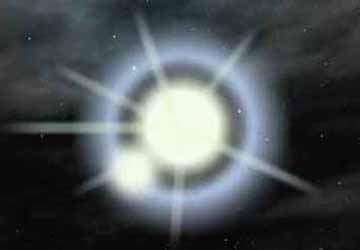
Historically, many cultures have attached special significance to Sirius.
Egypt
Sirius was astronomically the foundation of the Egyptian religious system. It was the embodiment of Isis, wife and consort of the god Osiris, who appeared in the sky as Orion.
Ancient Egyptians called Sirius the 'Dog Star', after their god Osiris, whose head in pictograms resembled that of a dog. In Egypt, Sirius shines for most of the summer, and since it is such a bright star, the Egyptians actually believed that the additional light from this nearby star was responsible for the summer heat. This of course is not true. However the origin of the phrase 'the dog days of summer' comes from this ancient belief, the 'dog star' being the root of this common saying.
Sirius was worshipped as Sothis in the valley of the Nile. Sothis is the Greek name of a star that the Egyptians considered most significant. Sophis is concluded by modern scholars to Sirius. The Goddess Sothis, Sopdet, Sepdet personified the 'dog star' Sirius. This star was the most important of the stars to the ancient Egyptians, and the heliacal rising of this star came at the time of flooding and the start of the Egyptian New Year.
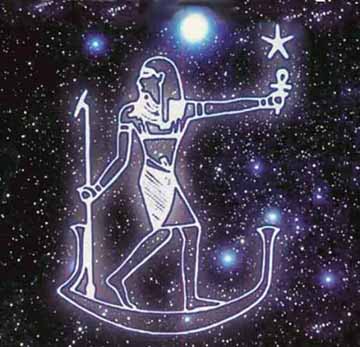
The Middle Kingdom based their calendar on the heliacal rising of Sirius, which occurred just before the annual flooding of the Nile and the summer solstice.
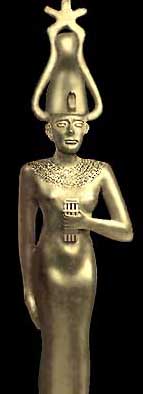
Sothis, and her husband, the god Sah, came to be viewed as manifestations of Isis and Osiris. She was represented as a woman with a star on top of her headdress, or as a seated cow with a plant between her horns (just as Seshat's hieroglyph might have been a flower or a star) as depicted on an ivory tablet of King Djer. The plant may have been symbolic of the year, and thus linking her to the yearly rising of Sirius and the New Year. She was very occasionally depicted as a large dog, or in Roman times, as the goddess Isis-Sopdet, she was shown riding side-saddle on a large dog.
Sirius was both the most important star of ancient Egyptian astronomy, and one of the Decans (star groups into which the night sky was divided, with each group appearing for ten days annually). The heliacal rising (the first night that Sirius is seen, just before dawn) was noticed every year during July, and the Egyptians used this to mark the start of the New Year ('The Opening of the Year'). It was celebrated with a festival known as 'The Coming of Sopdet'.
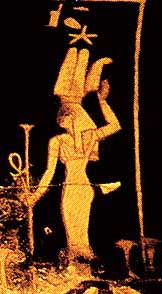
As early as the 1st Dynasty, Sophis was known as 'the bringer of the new year and the Nile flood'. When Sirius appeared in the sky each year, the Nile generally started to flood and bring fertility to the land. The ancient Egyptians connected the two events, and so Sopdet took on the aspects of a goddess of not only the star and of the inundation, but of the fertility that came to the land of Egypt with the flood. The flood and the rising of Sirius also marked the ancient Egyptian New Year, and so she also was thought of as a goddess of the New Year.
Her aspect of being a fertility goddess was not just linked to the Nile. By the Middle Kingdom, she was believed to be a mother goddess, and a nurse goddess, changing her from a goddess of agriculture to a goddess of motherhood. This probably was due to her strong connection with the mother-goddess Isis. Not just a goddess of the waters of the inundation, Sopdet had another link with water - she was believed to cleanse the pharaoh in the afterlife. It is interesting to note that the embalming of the dead took seventy days - the same amount of time that Sirius was not seen in the sky, before it's yearly rising. She was a goddess of fertility to both the living and the dead.
In the Pyramid Texts, she is the goddess who prepares yearly sustenance for the pharaoh, 'in this her name of "Year"'. She is also thought to be a guide in the afterlife for the pharaoh, letting him fly into the sky to join the gods, showing him 'goodly roads' in the Field of Reeds and helping him become one of the imperishable stars. She was thought to be living on the horizon, encircled by the Duat.In Egyptian mythology, Duat (or Tuat) (also called Akert, Amenthes or Neter-khertet) is the underworld, where the sun god Ra traveled from west to east during the night, and where he battled Apep. It was also the place where people's souls went after death. The structure of the Duat, and the dangers faced there by dead souls, are detailed in texts such as the Book of Gates and the Book of the Dead. The most famous scene from the Duat is the Weighing of the Heart, in which the dead were judged by Anubis, using a feather, representing Ma'at, the goddess of Truth. Souls which were weighted down by sin were eaten by Ammit. It is not known, however, whether a sinner's heart is heavier or lighter than the feather, only that to be accepted into Aaru the heart must weigh the same.
In the Pyramid Texts, paralleling the story of Osiris and Isis, the pharaoh was believed to have had a child with Sopdet: "Your sister Isis comes to you rejoicing for love of you. You have placed her on your phallus and your seed issues into her, she being ready as Sopdet, and Horus-Soped has come forth from you as Horus who is in Sopdet."
Sopdet was believed to be wife of Sah (the star Orion) and the mother of Soped (Sopdu). She was also thought to give birth to the Morning Star (Venus), the pharaoh being described as the father in the Pyramid Texts. She was linked closely with Isis, just as Sah and Soped were linked with Osiris and Horus. In 'The Lamentations of Isis and Nephthys for Osiris', Isis calls herself Sopdet, saying that she will follow Osiris in the heaven. Sopdet was also connected to the goddess Satet at Abu (Elephantine).
She was also given a masculine aspect, and linked with Horus as Sopdet-Horus during the Middle Kingdom. She was also linked with Anubis during Greek Times as Sopdet-Anubis, probably because of the iconography of her as a god, or riding on the back of a dog. She was also linked with other goddesses such as Hathor -- Bast and Anqet, the Embracer, Goddess of Fertility and the Nile at Aswan.
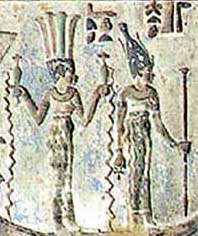
She was worshiped through Egyptian history, from predynastic times, through to the Graeco-Roman period. She was venerated in Per-Soped (Saft al Hinna), in the 20th Nome of Lower Egypt.
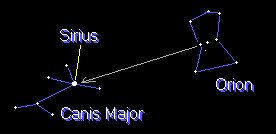
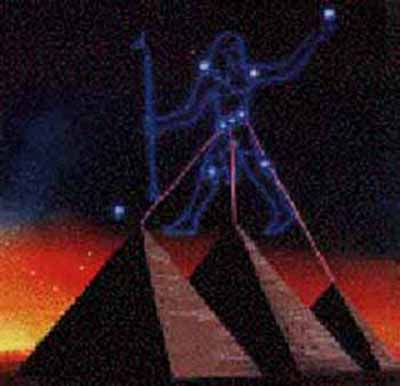
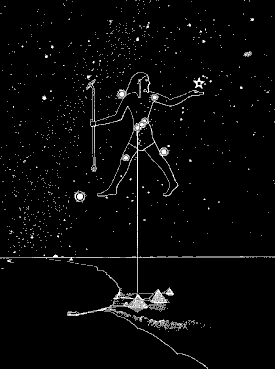
Belt Stars of Orion and the Great Pyramid
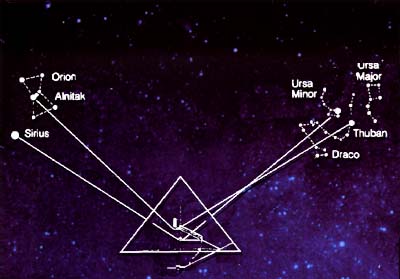
Sirius, Queen's Chamber (Feminine), Pleiades (Sister Stars)
Orion, Kings Chamber, Thuban
Thuban was the pole star when the pyramids allegedly were built and the program began. Seamen called it 'The Dragon's Tail' (Reptilian, DNA References)
Dogon
The Dogon describe ts 'star' specifically as having a circle of reddish rays around it, and this circle of rays is 'like a spot spreading' but remaining the same size. The Dogon are a West African tribe who have known about, and worshipped, Sirius A and its twin the invisible star Sirius B, for the past 5,000 years. They are have also been aware of the planets circle the sun in elliptical orbits, the four moons of Jupiter and the rings of Saturn.
They say that Sirius B is immensely heavy, invisible, very small, yet extremely powerful. Their understanding of the two stars' orbits coincides exactly with modern astronomical findings, yet was arrived at thousands of years before it was scientifically proven. They also claim that a third star Emme Ya - Sorghum Female - exists in the Sirius system. Larger and lighter than Sirius B, this star revolves around Sirius A as well.
The Dogon also believe that approximately 5,000 years ago, Amphibious Gods, called Nommo, came to Earth in three legged space ships from the Sirius Star System. They have described perfectly the DNA pattern made by this elliptical orbit created by the two stars as they rotate make around each other. They believe Sirius to be the axis of the universe, and from it all matter and all souls are produced in a great spiral motion.
In Greek Mythology Orion's dog became Sirius. The Greeks also associated Sirius with the heat of summer, the name Seirios often translated 'the scorcher'. �
The Quran mentions Sirius
053.049
Yusufali: That He is the Lord of Sirius (the Mighty Star);
Pickthal And that He it is Who is the Lord of Sirius;
Shakir: And that He is the Lord of the Sirius;
In the astrology of the Middle Ages, Sirius was a Behenian fixed star, associated with beryl and juniper.
Its kabbalistic symbol was listed by Heinrich Cornelius Agrippa.
Sirius is a BLUE-white star. Blue goes to the color of electricity. Reality is created by electromagnetic energy.
Alien creational entities from Sirius were allegedly BLUE. Alien Theory: Royalty - 'Bluebloods' are allegedly descended from this race.
"One of the theories is that Vishnu [God] is blue because his association with water therefore all his incarnations including Krishna, are shown as such." This goes to the flow of the collective unconsciousness to create grid realities in which our souls experience.
No comments:
Post a Comment